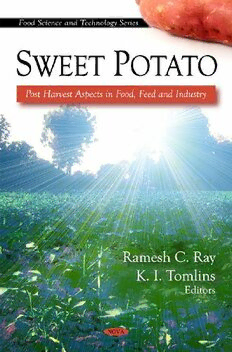
Sweet Potato: Post Harvest Aspects in Food, Feed and Industry (Food Science and Technology) PDF
327 Pages·2009·5.291 MB·English
Most books are stored in the elastic cloud where traffic is expensive. For this reason, we have a limit on daily download.
Preview Sweet Potato: Post Harvest Aspects in Food, Feed and Industry (Food Science and Technology)
Description:
Sweet potato (Ipomoea batatas L.), the seventh most important food crop after wheat, rice (paddy), maize, potato, barley and cassava, is a staple food in many developing countries of the tropics and sub-tropics, and also serves as animal feed and raw material for several food and feed-based industries. This New World crop has high biological efficiency of converting solar energy into edible energy (152MJ/ha/day) in form of tuberous (storage) roots and could be the food for the ever growing human population in future. Asia leads in area (60.75 per cent) and production (86.89 per cent) of sweet potato in the world. Sweet potato was originally a herbaceous perennial but was domesticated as an annual and grows best in moderately warm climate and temperature of 21-26 degreeC. It requires light textured soil with the optimum pH of 5.5-6.5 for good growth of the crop. Current research has focused on development of high starch, high dry matter and coloured (ss-carotene and anthocyanin-rich) sweet potato varieties for industrial applications in addition to traditional usage as food and animal feed. Sweet potato storage roots are subjected to several forms of post harvest losses during harvest, transportation from farmers' field to market and in storage. These are due to mechanical injury, weight loss, sprouting, diseases and pests. The subject, post harvest aspects of sweet potato in food, feed and industries, is a topic of current interest.
See more
The list of books you might like
Most books are stored in the elastic cloud where traffic is expensive. For this reason, we have a limit on daily download.
